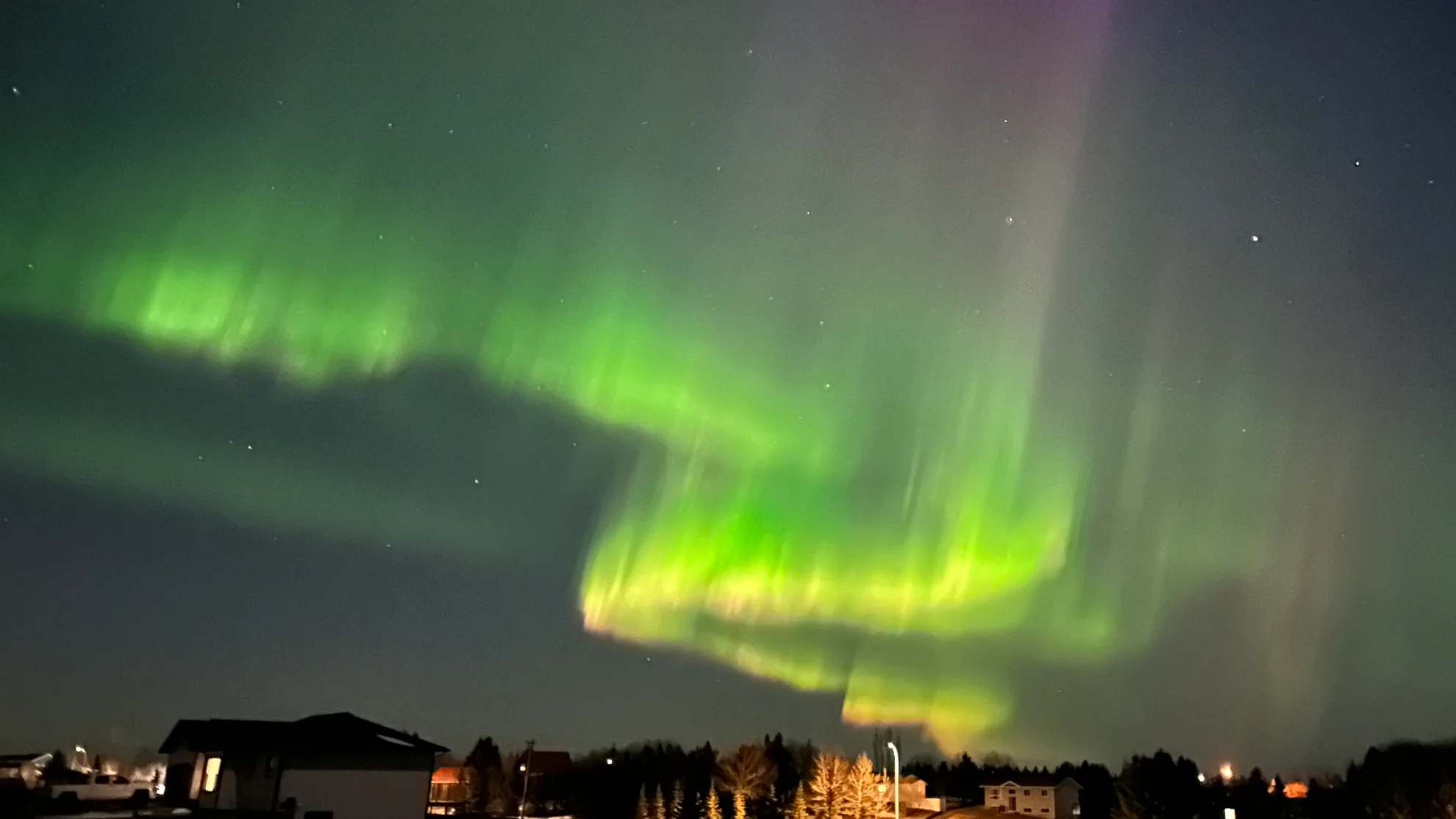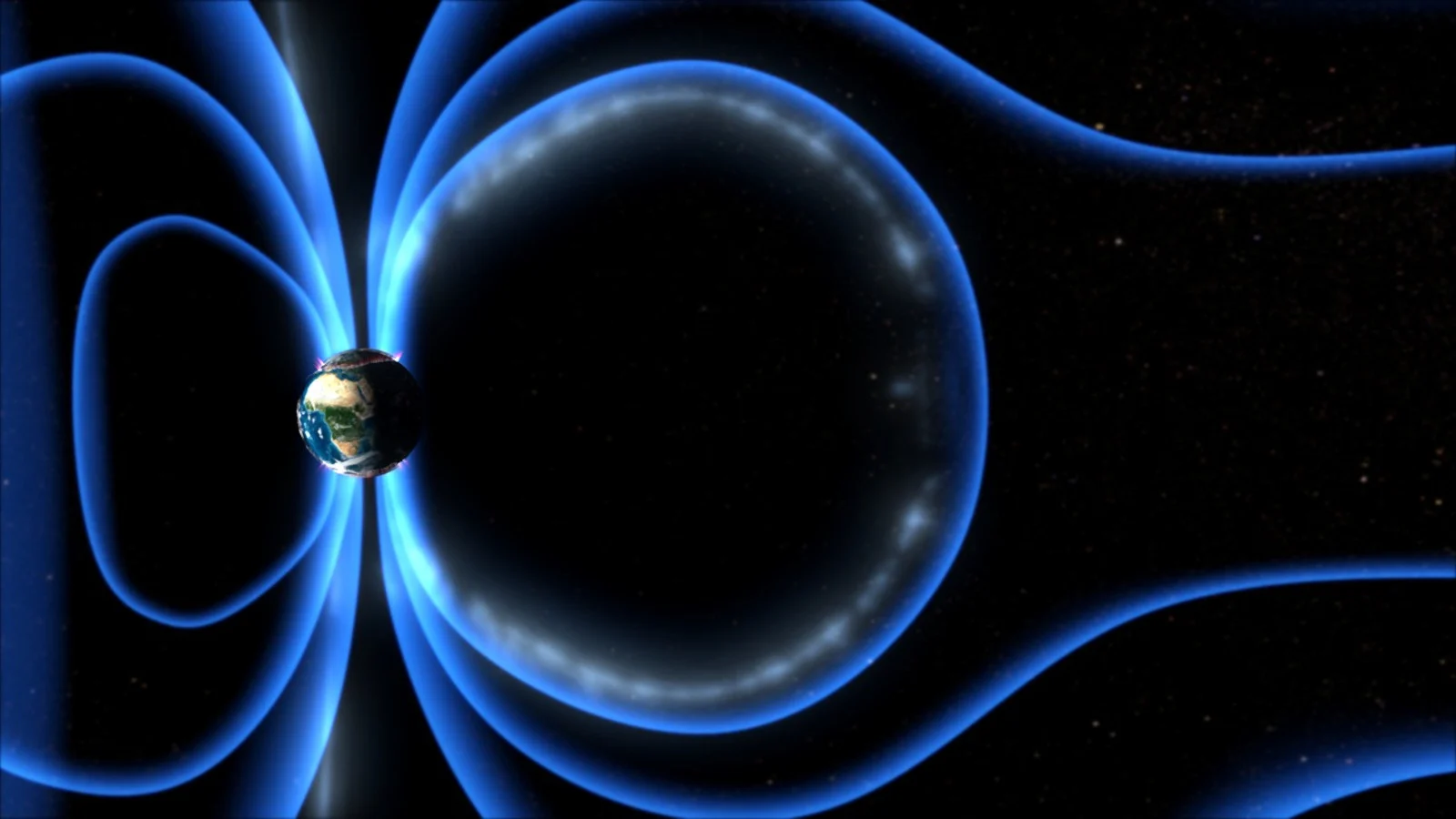
Aurora Borealis may light up skies across Canada Tuesday night
Eyes to the sky! A speedy stream of the solar wind could spark auroras overnight on Tuesday.
A stream of particles flowing out of an immense hole in the Sun's atmosphere is set to sweep past Earth, Tuesday night, potentially sparking a bright display of the Northern Lights.
According to forecasters at NOAA's Space Weather Prediction Center, due to the impacts of a fast, energetic flow of solar particles known as a Coronal Hole High Speed Stream, we may up to G2 (moderate) geomagnetic storm conditions overnight from Tuesday, April 22 through Wednesday, April 23.

READ MORE: Geomagnetic storms: When should we look up and when should we worry?
Space weather conditions have already reached G1 (minor) geomagnetic storm levels on Monday due to the effects of Earth crossing this blustery stream of the solar wind.
Based on SWPC's forecast, we could see G1 storm levels again during the afternoon on Tuesday, with G2 levels expected late in the day. This initial pulse of stormy conditions may be best timed for observers in Atlantic Canada to spot auroras just after sunset. There might be a slight pause before a second round of auroras closer to midnight for eastern Canada or after sunset for western Canada.

DON'T MISS: Get to know the hidden gems across Canada
Due to the shape of the aurora 'oval' around Earth, during a G2 geomagnetic storm, any Northern Lights displays tend to stick to northern regions for the eastern half of Canada — Newfoundland, PEI and New Brunswick, central Quebec, central Ontario, and across the upper Great Lakes. It takes a geomagnetic storm of strength G3 or higher, typically, for auroras to spread farther south. Observers across the western half of the country are much more lucky, as auroras from a 'substorm' or even G1 storm can stretch across their skies. G2 storms tend to produce displays of the Northern Lights that can be seen even across the border in the northern United States.
Who has clear skies?
Having at least a reasonably clear view of the night sky is essential for getting the most out of a display of the Northern Lights. The maps below shows the forecast cloud conditions across Canada for Tuesday night.


Central and northern Ontario appear to be the best places for clear skies during this event. In the west, southeastern Manitoba and southern Alberta should have the clearest skies Tuesday night.
What's going on?
Right now, there is an immense hole in the Sun's atmosphere that is rotating past Earth. This is known as a coronal hole, and it represents an area of the Sun's surface where the magnetic fields have opened up a large gap, exposing that region directly to space. As a result, this area of the Sun is cooler than its surrounding and appears darker than the hotter material around it.

The Sun, as imaged in extreme ultraviolet by the GOES-16 geostationary weather satellite's SUVI instrument on April 21 shows an immense coronal hole in the southern hemisphere (dark region, bottom right). (NOAA SWPC)
READ MORE: How do the Northern Lights shine? Here's the science behind auroras
The Sun constantly loses charged particles into space, which flow out through the solar system as the 'solar wind'. Streaming out of that coronal hole, though, is a much more energetic 'current' of particles, which is sweeping through interplanetary space like the blade of a pinwheel around the Sun. This is what space weather scientists call a Coronal Hole High Speed Stream (CH HSS).
As it sweeps past Earth, the CH HSS causes a spike in the number of high-energy solar particles flowing past our planet. If the conditions in that stream are just right, it will form magnetic connections with Earth's geomagnetic field, opening up a fast-track for the particles in the stream to flow down into the planet's atmosphere.
The disturbance to Earth's geomagnetic field due to these connections is what we call a geomagnetic storm. It's the solar particles interacting with atoms and molecules in the air that produce the light shows known as the Aurora Borealis or Northern Lights (and their southern counterparts, the Aurora Australis or Southern Lights).

An idealized representation of Earth's geomagnetic field is shown here, compressed on the sunward side (left), and drawn out into a long 'tail' on the anti-sunward side (right). White solar particles are trapped by the field, which then funnel down to produced auroras. (NASA)
When those particles encounter oxygen and nitrogen in the air, they pass on their energy to those atoms and molecules, putting them into an excited state. The oxygen and nitrogen then release the excess energy as flashes of light — atomic oxygen emits red, molecular oxygen emits green, and molecular nitrogen emits blue — with different colours mixing together to produce shades of purple, orange, pink, and even white.
(Thumbnail image courtesy Chris and Wina Reid, who captured this view of the Northern Lights from central Alberta on April 4, 2025)
